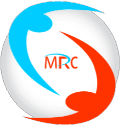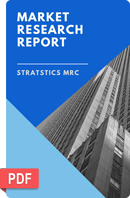
Temperature Sensor Market
Temperature Sensor Market Forecasts to 2030 - Global Analysis By Product Type (Contact Temperature Sensors and Non Contact Temperature Sensors), By Metal Type (Platinum, Nickel, Copper, Tungsten, Silicon and Other Metal Types), Output, Connectivity, End User and By Geography

|
Years Covered |
2021-2030 |
|
Estimated Year Value (2023) |
US $6.6 BN |
|
Projected Year Value (2030) |
US $10.3 BN |
|
CAGR (2023 - 2030) |
6.5% |
|
Regions Covered |
North America, Europe, Asia Pacific, South America, and Middle East & Africa |
|
Countries Covered |
US, Canada, Mexico, Germany, UK, Italy, France, Spain, Japan, China, India, Australia, New Zealand, South Korea, Rest of Asia Pacific, South America, Argentina, Brazil, Chile, Middle East & Africa, Saudi Arabia, UAE, Qatar, and South Africa |
|
Largest Market |
North America |
|
Highest Growing Market |
Asia Pacific |
According to Stratistics MRC, the Global Temperature Sensor Market is accounted for $6.6 billion in 2023 and is expected to reach $10.3 billion by 2030 growing at a CAGR of 6.5% during the forecast period. A temperature sensor is a device that measures the level of heat and converts it into an electrical signal. Widely used in industrial, scientific, and consumer applications, temperature sensors play a crucial role in monitoring and controlling processes. Their advantages include accuracy, responsiveness, and the ability to provide real-time data for efficient temperature management.
According to the India Brand Equity Foundation (IBEF), the Indian automotive sector became the fourth largest in the world, with sales increasing 9.5% year-on-year to 4.02 billion units in 2017.
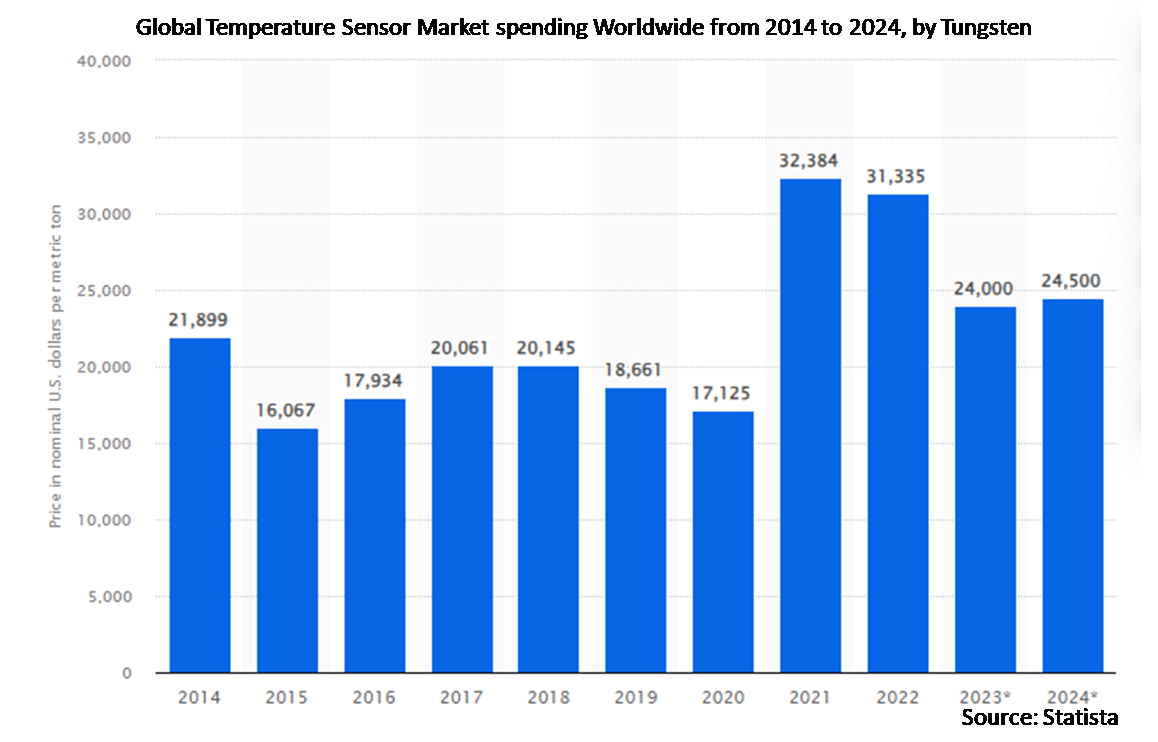
Market Dynamics:
Driver:
Growing adoption of temperature sensors in consumer electronics
With the proliferation of smartphones, wearables, and smart home devices, temperature sensors play a pivotal role in ensuring optimal performance and user experience. These sensors monitor device temperature to prevent overheating, enhance energy efficiency, and contribute to overall system stability. As consumer electronics continue to evolve, incorporating advanced features and functionalities, the demand for accurate and reliable temperature sensing becomes increasingly crucial. This trend underscores the pivotal role of temperature sensors in safeguarding device integrity and contributing to the seamless operation of a wide array of consumer electronic products.
Restraint:
Calibration complexities and the need for periodic calibration
Calibration is essential to maintain the accuracy and reliability of temperature measurements over time. However, the process introduces challenges, including the requirement for specialized equipment, skilled personnel, and interruptions to regular operations during calibration periods. Ensuring consistent accuracy can be particularly intricate in harsh environments or extreme temperature conditions where frequent recalibration may be necessary. The complexity of calibration procedures can lead to downtime and increased operational costs for industries reliant on temperature-sensitive processes.
Opportunity:
Rising use of temperature sensors in industrial automation
In the realm of Industry 4.0, temperature sensors play a pivotal role in optimizing processes, ensuring product quality, and maintaining operational efficiency. From manufacturing plants to logistics and supply chain management, industrial automation relies heavily on accurate temperature monitoring for equipment health and safety. As industries increasingly embrace automation for enhanced productivity, the demand for temperature sensors continues to grow. This opportunity is further accentuated by the integration of temperature sensing technologies with IoT and data analytics, providing real-time insights that contribute to informed decision-making and proactive maintenance strategies in industrial settings.
Threat:
Global supply chain disruptions
The intricate web of suppliers, manufacturers, and distributors involved in the production of temperature sensors is susceptible to external factors, such as geopolitical tensions, natural disasters, and global events like the COVID-19 pandemic. These disruptions can lead to delays in the procurement of raw materials, manufacturing components, and the transportation of finished products. As temperature sensors are integral components in various industries, including automotive, healthcare, and electronics, any interruption in the supply chain can result in production delays, increased costs, and a shortage of critical components.
Covid-19 Impact:
The COVID-19 pandemic significantly impacted the market, causing disruptions in the global supply chain, manufacturing slowdowns, and project delays. The pandemic-induced economic uncertainties led to fluctuations in demand across industries. While the healthcare sector experienced increased demand for temperature monitoring devices, other sectors faced challenges due to lockdowns and restrictions. Despite short-term setbacks, the market demonstrated resilience, with a subsequent recovery driven by the renewed focus on healthcare infrastructure, the acceleration of digital transformation, and the growing importance of temperature sensing technologies in ensuring health and safety in various applications.
The contact temperature sensors segment is expected to be the largest during the forecast period
The contact temperature sensors segment is expected to have lucrative growth in the market. These sensors, including thermocouples and thermistors, offer accurate readings in various applications such as industrial processes, automotive systems, and medical devices. Known for their durability and versatility, contact temperature sensors play a vital role in monitoring and controlling temperature in real-time, ensuring the efficiency and reliability of processes across a wide range of industries.
The healthcare segment is expected to have the highest CAGR during the forecast period
The healthcare segment is anticipated to witness the fastest CAGR growth during the forecast period. Temperature sensors play a critical role in maintaining the integrity of pharmaceuticals, ensuring the accuracy of diagnostic equipment, and monitoring patient vital signs. With the increasing demand for advanced healthcare solutions, the temperature sensor market experiences growth as healthcare providers leverage these sensors to enhance patient care, improve operational efficiency, and meet stringent regulatory standards in medical applications.
Region with largest share:
During the forecast period, it is expected that the North American market will continue to hold a majority of the market share, driven by technological advancements and widespread adoption across diverse industries. The region witnesses substantial demand for temperature sensors in automotive applications, smart manufacturing, and healthcare. Additionally, the presence of key market players and a robust research and development ecosystem contribute to the continuous innovation and integration of temperature sensing technologies. The emphasis on energy efficiency, stringent regulatory standards, and the growing significance of IoT applications further solidify North America's position as a significant contributor to the global temperature sensor market.
Region with highest CAGR:
Asia Pacific is projected to have the highest CAGR over the forecast period driven by rapid industrialization and technological advancements. The region, led by countries such as China, Japan, and India, witnesses substantial demand for temperature sensors across diverse sectors including automotive, electronics, and manufacturing. The growing emphasis on smart infrastructure, coupled with increasing investments in industrial automation, creates a conducive environment for temperature sensor adoption.
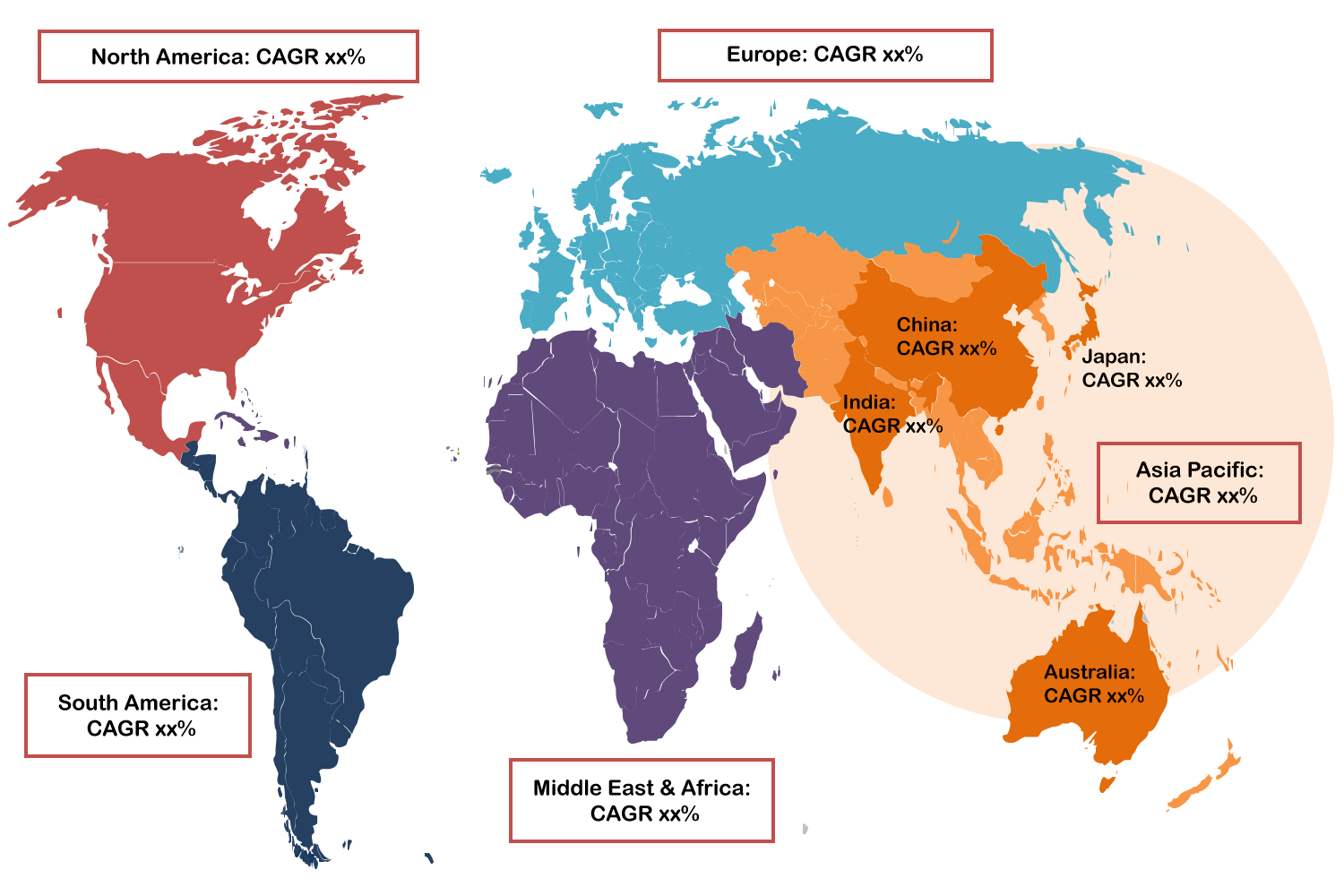
Key players in the market
Some of the key players in Temperature Sensor market include Amphenol, Dwyer Instruments, Emerson, Endress+Hauser Management AG, Honeywell International Inc., Kongsberg, Maxim Integrated, NXP Semiconductors, Pyromation, Siemens AG, STMicroelectronics, TE Connectivity Ltd., Texas Instruments Incorporated and WIKA Instruments.
Key Developments:
In February 2023, Micro Crystal introduced the RV-3032-C7 temperature sensor module suitable for applications that require continuous temperature monitoring, limits crossing detection, and timekeeping functions, with compliance to strict clock accuracy over time.
In December 2022, OMEGA Engineering announced the launch of the latest version of its HANI Clamp-On Temperature Sensor: the HANI Clamp Sensor is explicitly designed for plastic pipe applications. The Sensor precisely measures the temperature of media inside a pipe in seconds without ever breaching the pipe.
In July 2022, Siemens launched the RDG200 thermostat series. It offers a model that is natively equipped with a CO2 sensor and control functions. They allow indoor air quality to be monitored and adjusted to always ensure a healthy and productive indoor air climate for people in the building.
In June 2022, Sensirionlaunched its fourth-generation temperature sensor series: the STS4x. The digital sensor offers highly accurate measurements and offers industry-leading lead times. It is also available in different accuracy classes and is currently represented by the STS40. It offers features such as enhanced signal processing, three distinctive I2C addresses and communication speeds of up to 1 MHz.
Product Types Covered:
• Contact Temperature Sensors
• Non Contact Temperature Sensors
Metal Types Covered:
• Platinum
• Nickel
• Copper
• Tungsten
• Silicon
• Other Metal Types
Outputs Covered:
• Digital
• Analog
Connectivities Covered:
• Wired
• Wireless
End Users Covered:
• Chemicals
• Oil & Gas
• Consumer Electronics
• Energy & Power
• Healthcare
• Automotive
• Metals & Mining
• Food & Beverages
• Pulp & Paper
• Aerospace & Defense
• Other End Users
Regions Covered:
• North America
o US
o Canada
o Mexico
• Europe
o Germany
o UK
o Italy
o France
o Spain
o Rest of Europe
• Asia Pacific
o Japan
o China
o India
o Australia
o New Zealand
o South Korea
o Rest of Asia Pacific
• South America
o Argentina
o Brazil
o Chile
o Rest of South America
• Middle East & Africa
o Saudi Arabia
o UAE
o Qatar
o South Africa
o Rest of Middle East & Africa
What our report offers:
- Market share assessments for the regional and country-level segments
- Strategic recommendations for the new entrants
- Covers Market data for the years 2021, 2022, 2023, 2026, and 2030
- Market Trends (Drivers, Constraints, Opportunities, Threats, Challenges, Investment Opportunities, and recommendations)
- Strategic recommendations in key business segments based on the market estimations
- Competitive landscaping mapping the key common trends
- Company profiling with detailed strategies, financials, and recent developments
- Supply chain trends mapping the latest technological advancements
Free Customization Offerings:
All the customers of this report will be entitled to receive one of the following free customization options:
• Company Profiling
o Comprehensive profiling of additional market players (up to 3)
o SWOT Analysis of key players (up to 3)
• Regional Segmentation
o Market estimations, Forecasts and CAGR of any prominent country as per the client's interest (Note: Depends on feasibility check)
• Competitive Benchmarking
Benchmarking of key players based on product portfolio, geographical presence, and strategic alliances
Table of Contents
1 Executive Summary
2 Preface
2.1 Abstract
2.2 Stake Holders
2.3 Research Scope
2.4 Research Methodology
2.4.1 Data Mining
2.4.2 Data Analysis
2.4.3 Data Validation
2.4.4 Research Approach
2.5 Research Sources
2.5.1 Primary Research Sources
2.5.2 Secondary Research Sources
2.5.3 Assumptions
3 Market Trend Analysis
3.1 Introduction
3.2 Drivers
3.3 Restraints
3.4 Opportunities
3.5 Threats
3.6 Product Analysis
3.7 End User Analysis
3.8 Emerging Markets
3.9 Impact of Covid-19
4 Porters Five Force Analysis
4.1 Bargaining power of suppliers
4.2 Bargaining power of buyers
4.3 Threat of substitutes
4.4 Threat of new entrants
4.5 Competitive rivalry
5 Global Temperature Sensor Market, By Product Type
5.1 Introduction
5.2 Contact Temperature Sensors
5.2.1 Thermocouples
5.2.2 Resistive Temperature Detectors
5.2.3 Thermistors
5.2.4 Temperature Sensor ICs
5.2.5 Bimetallic Temperature Sensors
5.3 Non Contact Temperature Sensors
5.3.1 Infrared Temperature Sensors
5.3.2 Fiber Optic Temperature Sensors
6 Global Temperature Sensor Market, By Metal Type
6.1 Introduction
6.2 Platinum
6.3 Nickel
6.4 Copper
6.5 Tungsten
6.6 Silicon
6.7 Other Metal Types
7 Global Temperature Sensor Market, By Output
7.1 Introduction
7.2 Digital
7.2.1 Single-Channel
7.2.2 Multi-Channel
7.3 Analog
8 Global Temperature Sensor Market, By Connectivity
8.1 Introduction
8.2 Wired
8.3 Wireless
9 Global Temperature Sensor Market, By End User
9.1 Introduction
9.2 Chemicals
9.3 Oil & Gas
9.4 Consumer Electronics
9.5 Energy & Power
9.6 Healthcare
9.7 Automotive
9.8 Metals & Mining
9.9 Food & Beverages
9.10 Pulp & Paper
9.11 Aerospace & Defense
9.12 Other End Users
10 Global Temperature Sensor Market, By Geography
10.1 Introduction
10.2 North America
10.2.1 US
10.2.2 Canada
10.2.3 Mexico
10.3 Europe
10.3.1 Germany
10.3.2 UK
10.3.3 Italy
10.3.4 France
10.3.5 Spain
10.3.6 Rest of Europe
10.4 Asia Pacific
10.4.1 Japan
10.4.2 China
10.4.3 India
10.4.4 Australia
10.4.5 New Zealand
10.4.6 South Korea
10.4.7 Rest of Asia Pacific
10.5 South America
10.5.1 Argentina
10.5.2 Brazil
10.5.3 Chile
10.5.4 Rest of South America
10.6 Middle East & Africa
10.6.1 Saudi Arabia
10.6.2 UAE
10.6.3 Qatar
10.6.4 South Africa
10.6.5 Rest of Middle East & Africa
11 Key Developments
11.1 Agreements, Partnerships, Collaborations and Joint Ventures
11.2 Acquisitions & Mergers
11.3 New Product Launch
11.4 Expansions
11.5 Other Key Strategies
12 Company Profiling
12.1 Amphenol
12.2 Dwyer Instruments
12.3 Emerson
12.4 Endress+Hauser Management AG
12.5 Honeywell International Inc.
12.6 Kongsberg
12.7 Maxim Integrated
12.8 NXP Semiconductors
12.9 Pyromation
12.10 Siemens AG
12.11 STMicroelectronics
12.12 TE Connectivity Ltd.
12.13 Texas Instruments Incorporated
12.14 WIKA Instruments
List of Tables
1 Global Temperature Sensor Market Outlook, By Region (2021-2030) ($MN)
2 Global Temperature Sensor Market Outlook, By Product Type (2021-2030) ($MN)
3 Global Temperature Sensor Market Outlook, By Contact Temperature Sensors (2021-2030) ($MN)
4 Global Temperature Sensor Market Outlook, By Thermocouples (2021-2030) ($MN)
5 Global Temperature Sensor Market Outlook, By Resistive Temperature Detectors (2021-2030) ($MN)
6 Global Temperature Sensor Market Outlook, By Thermistors (2021-2030) ($MN)
7 Global Temperature Sensor Market Outlook, By Temperature Sensor ICs (2021-2030) ($MN)
8 Global Temperature Sensor Market Outlook, By Bimetallic Temperature Sensors (2021-2030) ($MN)
9 Global Temperature Sensor Market Outlook, By Non Contact Temperature Sensors (2021-2030) ($MN)
10 Global Temperature Sensor Market Outlook, By Infrared Temperature Sensors (2021-2030) ($MN)
11 Global Temperature Sensor Market Outlook, By Fiber Optic Temperature Sensors (2021-2030) ($MN)
12 Global Temperature Sensor Market Outlook, By Metal Type (2021-2030) ($MN)
13 Global Temperature Sensor Market Outlook, By Platinum (2021-2030) ($MN)
14 Global Temperature Sensor Market Outlook, By Nickel (2021-2030) ($MN)
15 Global Temperature Sensor Market Outlook, By Copper (2021-2030) ($MN)
16 Global Temperature Sensor Market Outlook, By Tungsten (2021-2030) ($MN)
17 Global Temperature Sensor Market Outlook, By Silicon (2021-2030) ($MN)
18 Global Temperature Sensor Market Outlook, By Other Metal Types (2021-2030) ($MN)
19 Global Temperature Sensor Market Outlook, By Output (2021-2030) ($MN)
20 Global Temperature Sensor Market Outlook, By Digital (2021-2030) ($MN)
21 Global Temperature Sensor Market Outlook, By Single-Channel (2021-2030) ($MN)
22 Global Temperature Sensor Market Outlook, By Multi-Channel (2021-2030) ($MN)
23 Global Temperature Sensor Market Outlook, By Analog (2021-2030) ($MN)
24 Global Temperature Sensor Market Outlook, By Connectivity (2021-2030) ($MN)
25 Global Temperature Sensor Market Outlook, By Wired (2021-2030) ($MN)
26 Global Temperature Sensor Market Outlook, By Wireless (2021-2030) ($MN)
27 Global Temperature Sensor Market Outlook, By End User (2021-2030) ($MN)
28 Global Temperature Sensor Market Outlook, By Chemicals (2021-2030) ($MN)
29 Global Temperature Sensor Market Outlook, By Oil & Gas (2021-2030) ($MN)
30 Global Temperature Sensor Market Outlook, By Consumer Electronics (2021-2030) ($MN)
31 Global Temperature Sensor Market Outlook, By Energy & Power (2021-2030) ($MN)
32 Global Temperature Sensor Market Outlook, By Healthcare (2021-2030) ($MN)
33 Global Temperature Sensor Market Outlook, By Automotive (2021-2030) ($MN)
34 Global Temperature Sensor Market Outlook, By Metals & Mining (2021-2030) ($MN)
35 Global Temperature Sensor Market Outlook, By Food & Beverages (2021-2030) ($MN)
36 Global Temperature Sensor Market Outlook, By Pulp & Paper (2021-2030) ($MN)
37 Global Temperature Sensor Market Outlook, By Aerospace & Defense (2021-2030) ($MN)
38 Global Temperature Sensor Market Outlook, By Other End Users (2021-2030) ($MN)
Note: Tables for North America, Europe, APAC, South America, and Middle East & Africa Regions are also represented in the same manner as above.
List of Figures
RESEARCH METHODOLOGY
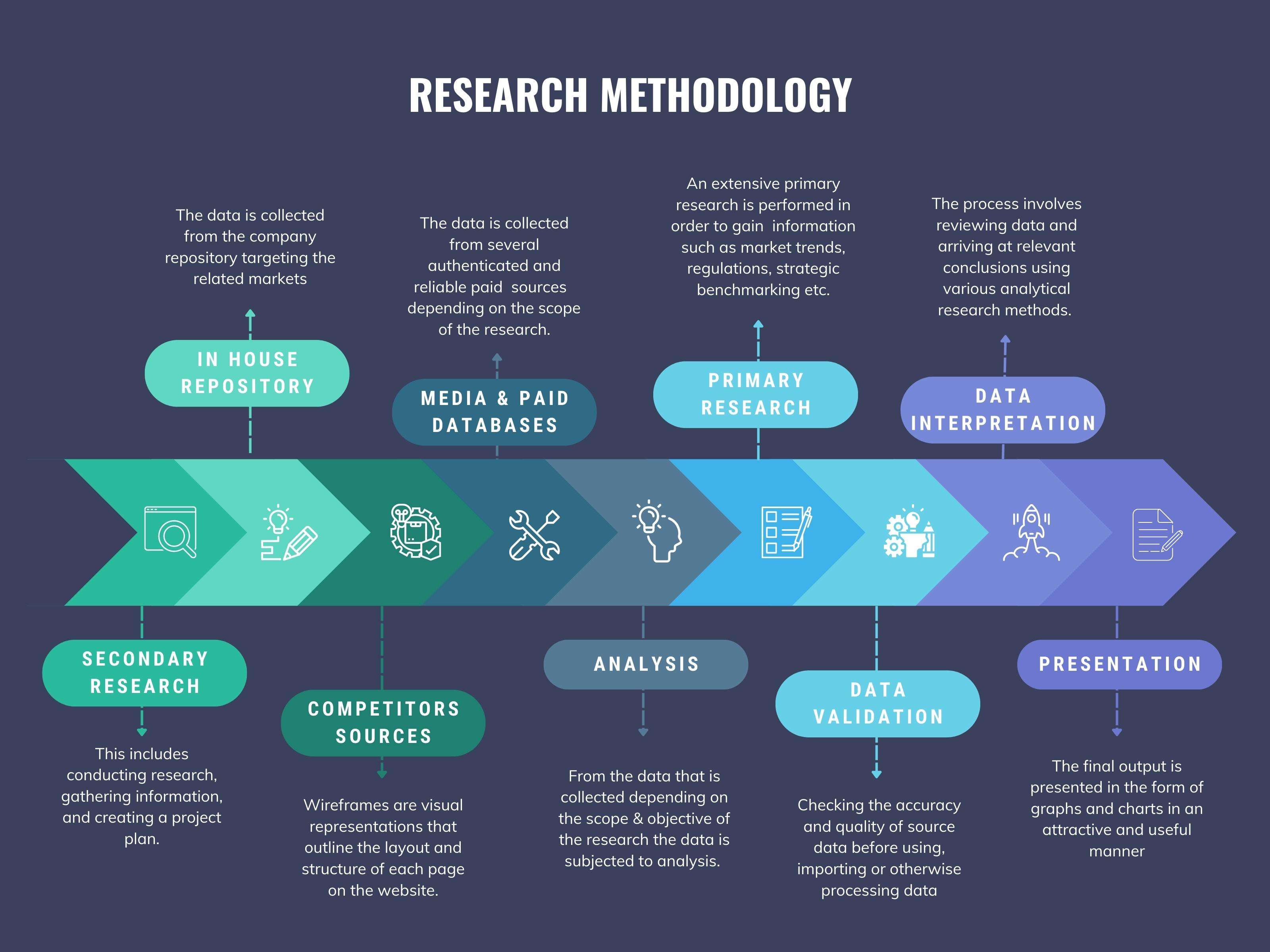
We at ‘Stratistics’ opt for an extensive research approach which involves data mining, data validation, and data analysis. The various research sources include in-house repository, secondary research, competitor’s sources, social media research, client internal data, and primary research.
Our team of analysts prefers the most reliable and authenticated data sources in order to perform the comprehensive literature search. With access to most of the authenticated data bases our team highly considers the best mix of information through various sources to obtain extensive and accurate analysis.
Each report takes an average time of a month and a team of 4 industry analysts. The time may vary depending on the scope and data availability of the desired market report. The various parameters used in the market assessment are standardized in order to enhance the data accuracy.
Data Mining
The data is collected from several authenticated, reliable, paid and unpaid sources and is filtered depending on the scope & objective of the research. Our reports repository acts as an added advantage in this procedure. Data gathering from the raw material suppliers, distributors and the manufacturers is performed on a regular basis, this helps in the comprehensive understanding of the products value chain. Apart from the above mentioned sources the data is also collected from the industry consultants to ensure the objective of the study is in the right direction.
Market trends such as technological advancements, regulatory affairs, market dynamics (Drivers, Restraints, Opportunities and Challenges) are obtained from scientific journals, market related national & international associations and organizations.
Data Analysis
From the data that is collected depending on the scope & objective of the research the data is subjected for the analysis. The critical steps that we follow for the data analysis include:
- Product Lifecycle Analysis
- Competitor analysis
- Risk analysis
- Porters Analysis
- PESTEL Analysis
- SWOT Analysis
The data engineering is performed by the core industry experts considering both the Marketing Mix Modeling and the Demand Forecasting. The marketing mix modeling makes use of multiple-regression techniques to predict the optimal mix of marketing variables. Regression factor is based on a number of variables and how they relate to an outcome such as sales or profits.
Data Validation
The data validation is performed by the exhaustive primary research from the expert interviews. This includes telephonic interviews, focus groups, face to face interviews, and questionnaires to validate our research from all aspects. The industry experts we approach come from the leading firms, involved in the supply chain ranging from the suppliers, distributors to the manufacturers and consumers so as to ensure an unbiased analysis.
We are in touch with more than 15,000 industry experts with the right mix of consultants, CEO's, presidents, vice presidents, managers, experts from both supply side and demand side, executives and so on.
The data validation involves the primary research from the industry experts belonging to:
- Leading Companies
- Suppliers & Distributors
- Manufacturers
- Consumers
- Industry/Strategic Consultants
Apart from the data validation the primary research also helps in performing the fill gap research, i.e. providing solutions for the unmet needs of the research which helps in enhancing the reports quality.
For more details about research methodology, kindly write to us at info@strategymrc.com
Frequently Asked Questions
In case of any queries regarding this report, you can contact the customer service by filing the “Inquiry Before Buy” form available on the right hand side. You may also contact us through email: info@strategymrc.com or phone: +1-301-202-5929
Yes, the samples are available for all the published reports. You can request them by filling the “Request Sample” option available in this page.
Yes, you can request a sample with your specific requirements. All the customized samples will be provided as per the requirement with the real data masked.
All our reports are available in Digital PDF format. In case if you require them in any other formats, such as PPT, Excel etc you can submit a request through “Inquiry Before Buy” form available on the right hand side. You may also contact us through email: info@strategymrc.com or phone: +1-301-202-5929
We offer a free 15% customization with every purchase. This requirement can be fulfilled for both pre and post sale. You may send your customization requirements through email at info@strategymrc.com or call us on +1-301-202-5929.
We have 3 different licensing options available in electronic format.
- Single User Licence: Allows one person, typically the buyer, to have access to the ordered product. The ordered product cannot be distributed to anyone else.
- 2-5 User Licence: Allows the ordered product to be shared among a maximum of 5 people within your organisation.
- Corporate License: Allows the product to be shared among all employees of your organisation regardless of their geographical location.
All our reports are typically be emailed to you as an attachment.
To order any available report you need to register on our website. The payment can be made either through CCAvenue or PayPal payments gateways which accept all international cards.
We extend our support to 6 months post sale. A post sale customization is also provided to cover your unmet needs in the report.
Request Customization
We provide a free 15% customization on every purchase. This requirement can be fulfilled for both pre and post sale. You may send your customization requirements through email at info@strategymrc.com or call us on +1-301-202-5929.
Note: This customization is absolutely free until it falls under the 15% bracket. If your requirement exceeds this a feasibility check will be performed. Post that, a quote will be provided along with the timelines.
WHY CHOOSE US ?

Assured Quality
Best in class reports with high standard of research integrity

24X7 Research Support
Continuous support to ensure the best customer experience.

Free Customization
Adding more values to your product of interest.

Safe & Secure Access
Providing a secured environment for all online transactions.

Trusted by 600+ Brands
Serving the most reputed brands across the world.
